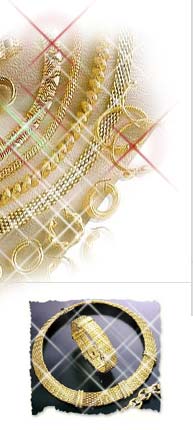 |
Where
quality matters............ |
| Infos Historic
Diamonds Copyright
by | Until the discovery of the first diamond deposits in South Africa, diamonds had always be found in secondary deposits. This meant that they could be encountered in eroded rock mostly near rivers and could hence be easily won. Thus primitive methods like screening and washing of the river bed were used in the beginning: Illustration From these first methods, diamond recovery, building on global mine experience (coal, ores), developed into sophisticated technology. The kimberlite pipes were first worked in the open pit method (see also historical diamond winning at the Big Hole / Kimberley).When open pit mining from depths of up to 100 m, depending on local conditions, became increasingly dangerous, a switch had to be made to underground mining methods. Illustr.: Underground Here Chambering was the first development. Variations of it are Block Caving and Block Caving Into Chutes ; both are basically mere modifications of the chambering principle.Alluvial deposits are worked in the open pit method. They resemble vast building sites on which huge masses of earth are moved with gigantic machinery: Illustr.De Beers have founded a subsidiary which engages exclusively in the recovery of diamonds from the bottom of the sea: De Beers Marine.All recovery methods have in common that, in the course of continuous technologisation, they developed from exclusive manual work to highly mechanised working methods and will continue to develop. ProcessingProcessing is the separation of the diamonds from the unwanted accompanying materials of the mined rock. In this connection it is important to know that the diamond content itself, even of highly diamondiferous deposits, seldom amounts to more than 1 : 25,000,000 . This means that a huge amount of rock has to be mined to get to a few of these small precious objects. Concretely: To get 1 ct of diamond, up to 5,000 kg of rock have to be mined and processed (and then you don't even get every diamond in gem quality). .Doesn't this already explain why diamonds are so precious? And how does one get to all these stone under the debris?In suitable stone crushers, the mined chunks of blue ground and kimberlite are first1. Mechanically broken up. A cleverly thought-out design of these plant prevents fracturing of the diamonds themselves. 2. Then they pass through a screen into:3. Rotary washing pans, in which they accumulate with other so-called heavy minerals, i.e. with those of high density or high specific gravity. 4. Then they are concentrated with electrochemical Flotation processes. 5. Via cylindrical screens and vibrating grates the heavy mineral-"grains" pass to the: 6. Grease-coated belts. Here the strong adhesion (sticking ability) of the diamonds to grease is utilised, which stick despite the flushing of the belts with water. 7. Finally the diamond-laced grease is filled into containers and molten, with the grease running off and the diamonds remaining behind.Excepting diamonds that will not stick: on the one hand, such that are won from secondary marine deposits and, due to long embedment in salty sand, have a skin; on the other hand, such that have become encrusted in other secondary deposits. First the adhering impurities have to be chemically removed in order to recover the diamonds likewise with grease belts. In the late fifties Russian engineers developed a completely new processing method for diamonds, viz. the one with x-ray luminescence.A further processing method for diamonds is electrostatic separation base on the low electric conductivity of 99% of all diamonds, which above all permits capturing even of the smallest specimens of diamonds. .Some processes are sure to see further technological development , contributing to better recovery and cost saving. It likewise appears probable that entirely novel processes will be used in future.Following these steps, the extracted diamonds will be rated according to quality and sorted. Only the ones suited for jewellery will be "manufactured". Industrial diamonds will not be included in our following survey. This operation is followed by manufacturing of the diamonds. |
|
||

